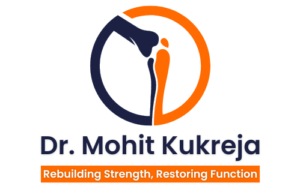Osteotomies Around the Knee Joint
Introduction
Osteotomies around the knee joint are surgical procedures designed to correct the alignment of the knee, relieve pain, and preserve the function of the joint. These procedures are particularly beneficial for patients with knee osteoarthritis or other deformities that affect the knee’s biomechanics. One of the most common and effective osteotomies performed around the knee is the High Tibial Osteotomy (HTO).
What is High Tibial Osteotomy?
High Tibial Osteotomy is a surgical procedure that involves cutting and reshaping the upper part of the tibia (shinbone) to realign the knee joint. This procedure is primarily used to treat unicompartmental osteoarthritis, which typically affects the inner (medial) part of the knee. By realigning the knee, HTO shifts the weight-bearing load away from the damaged area to a healthier part of the knee, thereby reducing pain and slowing the progression of arthritis.
Indications for High Tibial Osteotomy
HTO is indicated for patients who:
- Have unicompartmental osteoarthritis predominantly in the medial compartment of the knee.
- Are younger and more active, as they may not be ideal candidates for total knee replacement.
- Have knee malalignment, such as varus deformity (bow-leggedness).
- Experience knee pain that worsens with activity and improves with rest.
- Have intact ligaments and reasonable range of motion in the knee joint.
Types of High Tibial Osteotomy
- Closing Wedge Osteotomy: A wedge of bone is removed from the lateral side of the tibia, and the bone is closed together to realign the knee.
- Opening Wedge Osteotomy: A wedge-shaped gap is created on the medial side of the tibia, which is then filled with a bone graft or a synthetic bone substitute to realign the knee.
Postoperative Care and Rehabilitation
Postoperative care is crucial for the success of HTO. It includes:
- Pain management with medications.
- Use of crutches or a walker to avoid putting weight on the operated leg for several weeks.
- Physical therapy to restore range of motion, strengthen the muscles, and gradually return to normal activities.
- Regular follow-up appointments to monitor healing and ensure proper alignment.
Benefits of High Tibial Osteotomy
- Joint Preservation: HTO preserves the patient’s own knee joint, delaying or potentially avoiding the need for total knee replacement.
- Pain Relief: By redistributing the load across the knee, HTO reduces pain in the affected compartment.
- Improved Function: Patients often experience improved knee function and increased ability to participate in physical activities.
- Slowing Disease Progression: HTO can slow the progression of osteoarthritis by reducing stress on the damaged area of the knee.
Conclusion
High Tibial Osteotomy is a valuable technique for patients with knee osteoarthritis and malalignment. By correcting the knee’s alignment, HTO helps preserve the joint, reduce pain, and improve function. Proper patient selection, meticulous surgical technique, and comprehensive postoperative care are essential for achieving the best outcomes with this procedure.
